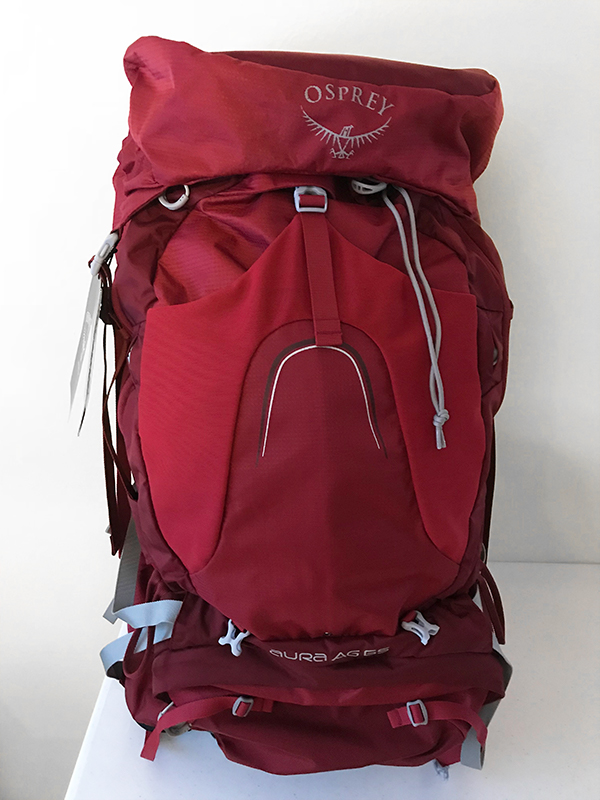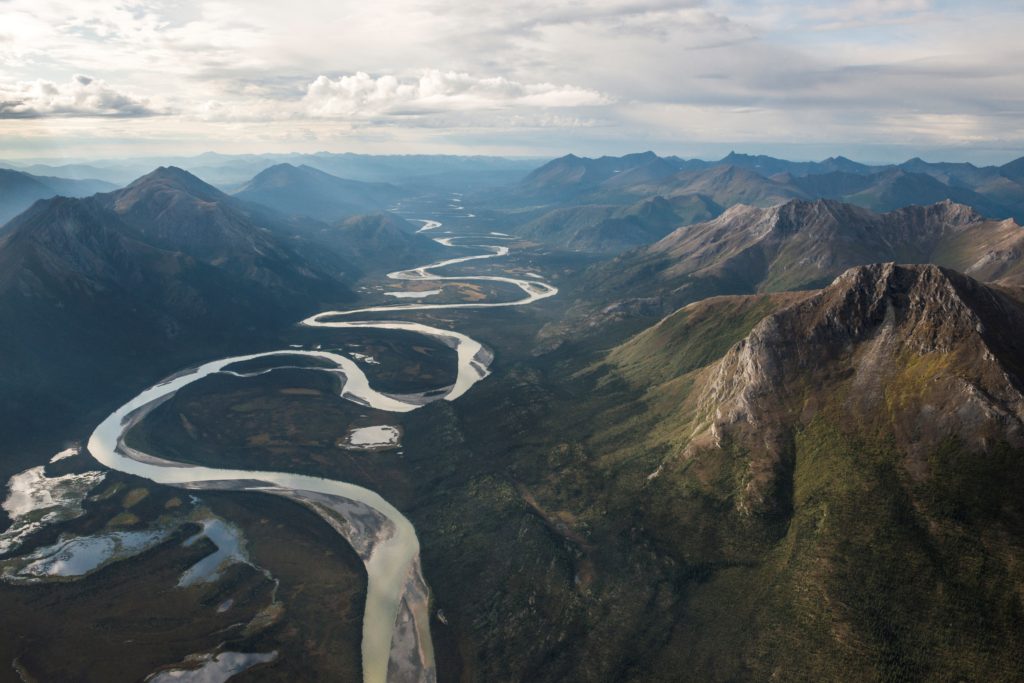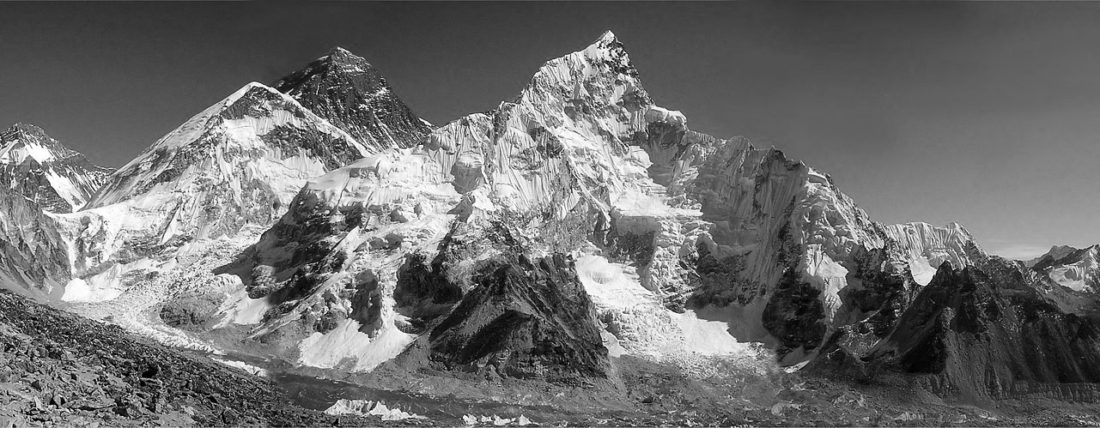If there’s one thing I’ve learned this past weekend, it’s that people, travelers specifically, are crazy.
REI is currently holding a deal for its members, where you can receive 20 percent off one full-priced item, and 20 percent off one REI Garage item. With this deal in hand, I decided to buy a few things for my Everest Base Camp (EBC) Trek, though it’s still about a year away.
Out of all of the items I need to purchase, three are going to be the most expensive: my trekking boots, my pack, and my down jacket.
I went to REI to check out their jacket supplies, as well as try on some pairs of trekking boots and packs. Everything I’ve read or watched has stressed the importance of trying on your boots and your pack in person – having now done so, I can say the same. You definitely need to try on both items in person, and not just order something online.
I started my visit at REI by looking for a down jacket, but somehow, there is an extremely limited stock of jackets at REI right now, so I moved right along to the boot section. A nice gentlemen named Gregory came over to help me, and I told him that I planned to trek to Everest Base Camp in about a year, and was looking for a good pair of boots for the trek.
“First, I want to thank you for coming in so early,” he said. “It’s good to prepare, and you’re going to want to wear these boots in before you go. We have a lot of people coming in last minute, and that’s not good.”
I was a little surprised by that, because it seems to me that most people would want to break in their trekking shoes before a multi-day trip.
Gregory was very helpful, and told me to look for five different things in a shoe.
Make sure they are waterproof.
This was something I already knew, but Gregory emphasized it. As I’ll be walking through snowy, and likely muddy at some points, landscapes, I’d need a shoe that was waterproof.
Look for shoes with deep treads.
Gregory told me to make sure the shoes I tried on had deep treads to really grip the ground. I’d be walking across all kinds of terrain on my trek, so it would be best to pick something that wouldn’t slip over icy rocks.
Try to bend the shoe – if it bends easily, you don’t want it.
Gregory told me I would want a shoe that was very solid, and not at all flexible. This helps support your foot as you’re walking, and prevents you from feeling the various dips and rocky areas along the trail. He picked up a pair of shoes to demonstrate, attempting to bend the shoe. He advised me to look for a shoe that I couldn’t bend at all.
Pick a shoe with high ankle support.
When I was around eight years old, I fractured my left ankle, and have periodically had trouble with it throughout the past few years. I suspected I would also be looking for a boot with higher ankle support, but wasn’t sure, so I asked Gregory. He happened to also have ankle issues, and told me that I would 100 percent want a shoe with high ankles, to keep my ankle from rolling during the trek.
Buy a shoe a full size above your normal size.
This is for two reasons: altitude changes your shoe size, and shoes that are too tight can injure your toes during the trek. REI has a general rule that as you try on hiking shoes, you should not be able to touch your toe to the end of the shoe. They have a fake rock setup that mimics an incline and decline, and they have you walk across it in each pair your try on, to ensure that on the decline, your toes don’t touch the tip of the shoe. When walking miles upon miles in shoes that are rubbing against your toes on a decline, you could seriously injure your toes.
Gregory also told me that feet swell and expand at high altitude, especially when you’ve been hiking on them for multiple days, so I’d want to make sure I have a larger shoe size to account for that.
So now I knew I’d need a waterproof shoe with thick treads, a sturdy sole that wouldn’t bend, with a high ankle, and in a full size up from my normal shoe size.
I had my heart set on a pair of Lowa boots that I had previously tried on, and knew walked like a dream. The shoes were rounded at the top, and really propelled you forward. I knew they were a shoe that I could walk 39 miles in over rock and ice. However, when I’d tried them on, they fit, but I knew they would be too small for the trek. Gregory suggested looking into other shoes, as the Lowa pair I liked did not, of course, come in the same sizes as the rest of the Lowa line, and therefore wouldn’t be a good option.
Gregory pulled me a few different pairs of shoes, none of which I ended up purchasing. I’m not sure if my heart was still stuck on those Lowa boots, but none of the other pairs seemed to walk the way I wanted them too. Some of them didn’t seem wide enough, and some of them didn’t have the same propelling quality that the Lowa boots did.
While I was trying on the boots, Gregory’s shift ended, so he sent another employee to help me in his absence. He told her my plans, and she also thanked me for coming in so early, saying nearly the same thing Gregory did.
I just want to know what kind of person is running into an REI last minute to pick up a pair of boots for a long-distance trek? Get it together and stop stressing out the poor, helpful REI employees!
I tried the other boots on, and didn’t like any of them, so I decided that I would go to Lowa’s website and see if they carried the boot in a different size, just in case REI randomly didn’t have that shoe in their stock, but Lowa did.
They did not.
Sadly, I’m going to have to find a different shoe. I’ve decided to head to Midwest Mountaineering in Minneapolis, to see what they have in stock. I’d like to purchase my shoes as soon as possible, so I can break them in during my various hiking adventures this summer.
Having learned a lot about what I’d need in a trekking shoe, I moved on to the backpack section. I’d read a lot about needing to try packs on in person, but felt a little skeptical and almost just bought one online. I’m glad I did not, however.
I perused the packs for awhile, and found the Osprey Aura AG 65, which looked nice. I pulled the pack over to a table in the middle of their pack section, and a few minutes later, a random guy came over to look at a different pack.
“Are you going on a trip?” he asked me.
“Yeah, I’m going on the Mount Everest Base Camp Trek in about a year,” I said.
“Oh, no way! That’s badass,” he said. “I’ve actually done that trek.”
“Oh, seriously?” I said, a million questions forming in my brain.
“Yeah, I’ve been all over,” he said. “That’s a great pack, you have.”
He pointed out a few features of the bag, including a pocket that faced the wearer’s back, where no one could access it, which is nice for places known for pick-pocketing.
A few moments later, an REI employee named Steve came over and became my new best friend.
Steve was the greatest. He gave me lots of advice, so when I found out he formerly worked as a teacher, and then worked at museums, where his job was designing the exhibits, it made a lot of sense!
He helped me figure out what size pack I needed, and guided me through the process of selecting a backpack. Steve also thanked me for coming in so early to get a pack, and said that he’s had people come in to REI on their way to the airport to pick up a pack for their trip on multiple occasions. Who are these people??
It was really fun to meet other travelers as I shopped, as well. Steve kept telling everyone who walked by that I was trekking to Everest, which sparked a conversation with pretty much all of them. Everyone was going on their own cool adventure, and it was fun to talk to people who were also embarking on multi-day trekking/hiking trips.
Pieces of advice I gained from my bud Steve:
Try on several packs from different brands to compare what you like and what you don’t.
I was glad to be given this advice, as it gave me an excuse to try on pretty much every pack they sold. I really liked the Osprey Aura that I had first tried on, but wasn’t sure if there was a better one out there. Steve made quite a few suggestions for backpacks and brands to try, and showed me the cool features of each pack.
Try backpacks on stuffed with pillows and weights, and then walk around to get a feel for how the pack would really sit and weigh on you.
Once I tried on a few different packs, I had it narrowed down to the Osprey Aura and a Deuter pack. Steve had me put pillows and weights in each pack, and walk around the store with them on, one at a time, to see how they really fit when “full.” Both bags felt great, but the support from the Osprey Aura made it feel like I was carrying nothing, even though I put twice as much weight in it as the Deuter pack.
Above all, comfort is key.
You need to make sure your back is comfortable, and not strained. I was torn on which backpack to pick, as I felt like Steve held the Deuter brand a little higher than Osprey, but the Osprey Aura fit me a million times better than any other pack there. The other bags felt like they curved away from my back, which made it feel like my back was arching to carry the weight more. The Aura fit me perfectly, however, and it felt extremely comfortable on my back. It was the Lowa of the packs, and I had to have it!

Isn’t she a beaut?
A few other pieces of advice Steve gave me:
Any water bladder will do.
A water bladder is an absolute must on a trek like the one to EBC. Altitude sickness is more prone to strike when someone is dehydrated, so it is extra important to stay hydrated on a trek in which the air is gradually lessening in oxygen. Steve told me that just because I purchased an Osprey backpack didn’t mean that I had to buy an Osprey water bladder – any brand of water bladder would fit in the pack. He also told me it’s often easier to stay hydrated with a water bladder, as the water is much more accessible during the trek.
You need a rain cover.
I’m glad he said this, because I was definitely considering not purchasing one and risking it. However, Steve told me that it would be important to invest in one, as I’ll be trekking through some snow. Once you get to a certain altitude near Everest, things stop drying, so it will be important not to get anything wet in the first place. A rain cover will be important to make sure I have dry clothes, and not frozen ones.
Good shoes are key to a good trek.
He told me that shoes would be one of the most important things I would need for my trek; he gave me some advice on how to choose the right pair, and told me that the REI staff are a whiz at helping you find what you need, which they definitely are. Thanks Gregory!
Trekking poles are a must.
Another item I thought I could get away without purchasing. He explained that trekking poles would do my knees a world of a difference – when you take a step on the trail, your body weight and the weight of your pack all balance on one leg and one knee, but using trekking poles helps disperse that weight, so you’re not causing as much stress on your knees. At this point, whatever Steve said goes, so I’ll be buying a pair of trekking poles soon!
Hike with your pack and trekking shoes on to train for your trek.
This way, you can simultaneously break in your shoes, and also train the muscles you’ll be using to carry your backpack. Summer hiking trips, here I come!
Hike in the mountains for a few days prior to your trek.
Steve told me I should take a small trip to Colorado, and visit Estes Park, where I could hike along a lot of trails, and get exposure to a higher altitude. In Minnesota, we’re only about 600 feet above sea level, whereas EBC is just over 17,000 feet above sea level. I’ve only been to 8,000 feet above sea level, so Steve’s recommendation is not a bad one. He highly recommended Estes Park for this training, and told me to come back if I decided to make the trip, so he could give me recommendations on what to do and where to eat there. What a guy!
Go to Gates of the Arctic National Park.
This has nothing to do with Everest, but Steve told me to go there, and Steve knows what’s up! He told me it was a super beautiful place to visit, and after looking at pictures of the park, I’ve added it to my travel bucket list!

Hell yeah I want to hike that.
All-in-all, it was a successful, educational trip to REI. What a gem of an establishment. Now, more prepping and training!
Let’s Connect:



